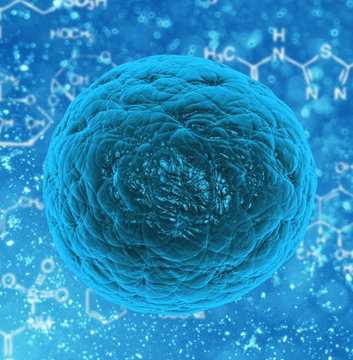
The resilience of cancer cells and their ability to survive in extreme conditions is a large part of what makes cancer so difficult to treat. But being such effective survivors may come at a cost. A group of Cancer Research UK-funded scientists are beginning to discover new vulnerabilities in cancer cells, which emerge when they enter ‘survival mode’. The research team, based at Imperial College London, looked at the effects of chemotherapy on multiple myeloma cells, an aggressive cancer that starts in the bone marrow.
They saw the expected – some of the cells were killed immediately, whilst others survived. They assumed that some of these survivors came away reasonably unscathed. But the group they were most interested in, were those cancer cells that survived, but only just.
“I thought that this group of cells must have come away with some level of stress,” explains Dr Holger Auner, head of the Imperial team.
“To survive in the long term, they must have had to deal with that stress by repairing the damage and restoring processes that allow them to function as effective cancer cells again”.
An ‘effective’ cancer cell is one that can grow, divide and has the potential to spread to other areas of the body, in a process called metastasis.
Maintaining these processes is one thing, requiring a huge amount of a cancer cell’s energy and resources. But having to restore these processes while recovering from the toxic effects of chemotherapy is even more taxing. And with finite resources available to the cancer cells, they are forced to sacrifice less essential processes to recover and survive.
“The cells need to put energy and effort into resolving that stress,” says Auner. “And in nature, there is this principle of a trade-off which means every biological system is usually limited in its resources.”
Auner compares this trade-off process to what the human body experiences after intensive exercise.
“If you go for a long run, you are putting your body under a high level of endurance stress, and your body will use a lot of energy and resources to prevent you from collapsing during your run.
“But if you then try lifting weights, you will find this is more difficult than if you hadn’t gone for a run first. That’s because your body has had to allocate energy for endurance, leaving it with less to use for strength”.
The same is true of cancer. Which begs the question – do these trade-offs open up vulnerabilities in the stressed cancer cells? The team went hunting.
One of the most promising vulnerabilities the team found was myeloma cells dependency on a molecule that plays a vital role in how cells respond to stress or a lack of nutrients, known as GCN2.
GCN2’s key purpose is to prevent the cell from producing too many proteins when amino acids – the building blocks for proteins – are scarce.
Which has a big impact – proteins, as well as making up our muscles and bones, play a key role in every single process that occurs in our cells.
It may seem counterproductive to switch off production of such a vital component at such a critical time. But it’s all about damage limitation.
Because for proteins to successfully carry out a complex array of jobs inside our cells, their structure – and therefore their production – must be finely tuned.
If the assembly line becomes stressed, it becomes unproductive and can even start making mistakes. Resulting in broken or misfunctioning, misshapen products.
This is not only a big waste of energy for the cell, but it’s bad for the cell. The build-up of these misshapen proteins can be toxic.
By stopping the protein factories running at full capacity, activated GCN2 helps keep the number of misshapen proteins down, and ensures the cell uses resources carefully, while it recovers.”
This period of recovery took several days, during which the cells lay low and GCN2 halts protein production. So timing, as always is everything.
“We have to make sure we hit the cells when they are already down,” says Auner. The team are now focused on the GCN2 molecule and its potential as a drug target.
